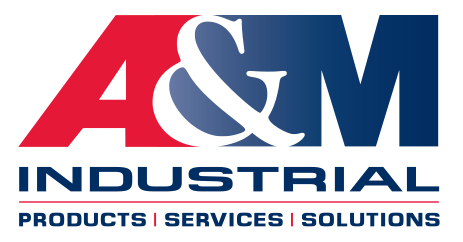Dynabrade Air Tool Maintenance: Keep Pneumatic Tools Running Smoothly
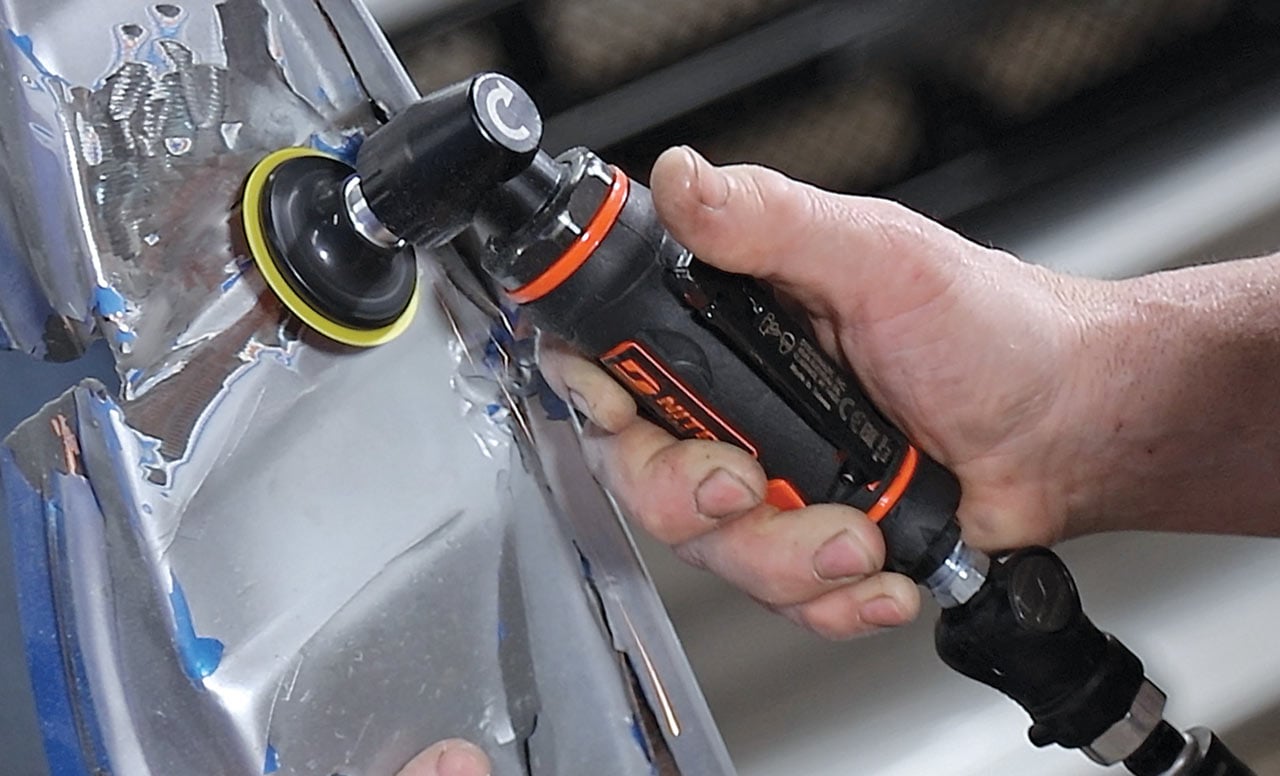
Regular preventative maintenance of your Dynabrade air tools will reduce the amount of time it takes to achieve the desired outcome from your operations. Saving just a few minutes per application can equate to a significant cost savings throughout the year. Substantial cost savings can be achieved by using high-quality, American made Dynabrade products and by focusing on reducing cycle times for labor intensive metalworking and maintenance operations.
Maintain a good air supply
REDUCE OR ELIMINATE CONDENSATION (WATER VAPOR) FROM THE AIR SUPPLY
- Water traps and drains can catch moisture before it can enter your system. Often, you can attach these devices to your air compressor system with a hose or pipe through the inlet. However, if your system doesn’t have an inlet, you can find water traps that connect directly to your system. Avoid water traps that reduce airflow by connecting to the outlet, as this can cause overheating in your system.
- After-coolers bring temperatures close to ambient air temperatures and helps to prevent water vapor from condensing into liquid.
- Perform all required air dryer maintenance and ensure components work correctly. Air dryers absorb water vapor and allow dry air to pass through your air tool.
PREVENT DEBRIS FROM ENTERING THE AIR MOTOR
- Filter the air.
- Keep the air inlet connections, plugs and couplers clean and free of dust and debris.
- Keep exhaust mufflers and elements in place. Muffler elements provide a barrier that will prevent dust from being pulled into the air motor.
- Do not use compressed air to blow-off the tool, this could force debris into bearings.
LUBRICATE THE AIR MOTOR
- Use an automatic lubricator to supply the correct weight and amount of air motor oil.
- Supply the air motor oil manually, directly into the air inlet. Regularly supply 2-3 drops throughout the day
Air Tool Lubrication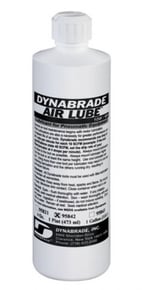
Proper lubrication through tool’s air inlet is crucial for maintaining the performance and longevity of your pneumatic tools. By using high-quality air tool oil, you can prevent moisture, dirt, rust, and other contaminants from reaching critical motor parts, thus extending the lifespan of your tools. It is important to avoid using detergent, paraffin-based oil, transmission fluid, multi-use aerosol lubricants, car motor oil, gear oil, gear grease, or ANY other lubricants not specifically designed for air tools. Dynabrade Air Lube oil absorbs up to 10% of its weight in water, preventing rust and the formation of sludge inside the motor.
Oiling Tips:
- The key to keeping your tool running properly is to lubricate it at the end of the day. Rust and corrosion will happen while the tool is sitting overnight. So, add 2 - 3 drops of air tool oil to the tool’s air inlet and run for 10 seconds – then put the tool to bed for the night!
- Too much oil is as bad for the tool as not enough oil. Excessive oiling will flush the bearings of their grease.
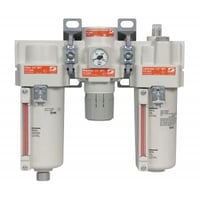
- Use an automatic Filter-Regulator-Lubricator (FRL) if possible. It will do a better job than manually adding 2 - 3 drops because the FRL atomizes the oil in the air stream so even the tightest areas of the air tool interior get penetrated with lubricant.
- Use air lube oil, like Dynabrade Air Lube when lubricating your air tool. DO NOT use gear grease or gear oils, as they are designed to stick to gear teeth to maintain lubrication. If used, it would be harmful to the sliding of the motor vanes in the cylinder and would slow down your air tool’s motor. Auto motor oil is too thick (high viscosity) and would soon slow down an air tool. It also has detergents in it that will clean out bearing grease, just like gear grease and gear oil.
Filter Maintenance
Air tools rely on a clean and consistent air supply to perform at their best. That's where filters come in. Check your Dynabrade air tool's filter regularly, and clean or replace it when necessary. A clogged filter can restrict airflow and lead to decreased tool performance.
CONCLUSION
Taking care of your air tools is essential if you want to keep them running smoothly and maximize their lifespan. Preventative maintenance of your Dynabrade air tools is crucial to ensuring their longevity and their consistent performance level, as well as the superb results these tools provide. Contact the A&M Industrial team for more air tool maintenance recommendations, or for assistance selecting the right Dynabrade air tool for your application.
download The Dynabrade maintenance guide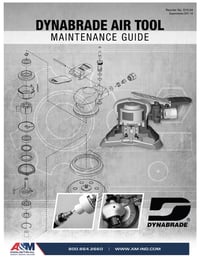
Download the Dynabrade Maintenance Guide for expert recommendations and tips on preventative maintenance and care of compressed air supply systems, compressors, air supply hoses, and air tools. Learn how to inspect and diagnose pneumatic tools and your air system, effectively increasing your efficiency, reducing costs, and ensuring your Dynabrade air tool's optimal performance.
